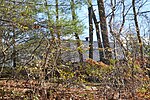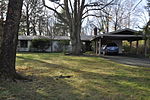St. Luke's School (Connecticut)
1928 establishments in ConnecticutAC with 0 elementsBuildings and structures in New Canaan, ConnecticutConnecticut school stubsEducational institutions established in 1928 ... and 4 more
Private elementary schools in ConnecticutPrivate high schools in ConnecticutPrivate middle schools in ConnecticutSchools in Fairfield County, Connecticut
St. Luke's School is a private, secular, co-educational day school founded in 1928 and situated on a 40-acre (160,000 m2) campus in New Canaan, Connecticut. St. Luke's offers a college-preparatory curriculum for grades 5 through 12, with a diverse student body of 594 from 30 towns in Connecticut and New York. St. Luke's operates radio station WSLX (91.9 FM).
Excerpt from the Wikipedia article St. Luke's School (Connecticut) (License: CC BY-SA 3.0, Authors).St. Luke's School (Connecticut)
North Wilton Road,
Geographical coordinates (GPS) Address Nearby Places Show on map
Geographical coordinates (GPS)
| Latitude | Longitude |
|---|---|
| N 41.191642385908 ° | E -73.496024936692 ° |
Address
Saint Luke's School
North Wilton Road 377
06840
Connecticut, United States
Open on Google Maps










